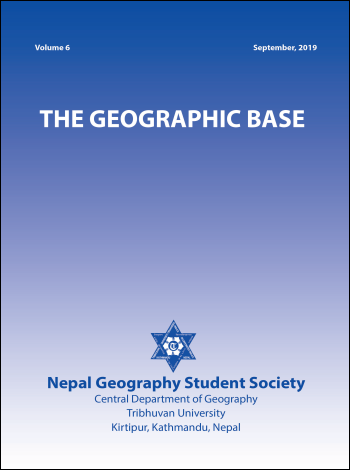Livestock Movement in Gaurisankhar Valley, Dolakha, Nepal
DOI:
https://doi.org/10.3126/tgb.v7i0.34263Keywords:
Livestock movement, grazing system, transhumance, ruminant production systemAbstract
Animals are an integral part of subsistence farming system. They are considered as assets and are the source of food and manure. In mountains of Nepal, transhumance ruminant production system is practiced this practice of herding of cattle like Yak (Nak, Chauri)/ sheep has been practiced for generation in the mountains of Nepal. This study is based on household questionnaire survey, FGD and interview in Gaurishankar gaupalika shows the movement of sheep ranged from 1,200m to 4,500m elevation and the movement of Yak ranged from 2,000m to 3,500masl. The agricultural fields around the settlements are cultivated when the herds remained in high mountain pasture. After returning to the village, they are tied to the field and their waste is used for manuring the agricultural lands. The types and size of livestock has also undergone a significant change. The number of sheep and buffalo have decreased due to lack of market while the Yak farming has been gaining popularity because of increase in national and international demand for Yak products.
Downloads
Downloads
Published
How to Cite
Issue
Section
License
© Nepal Geography Student Society




